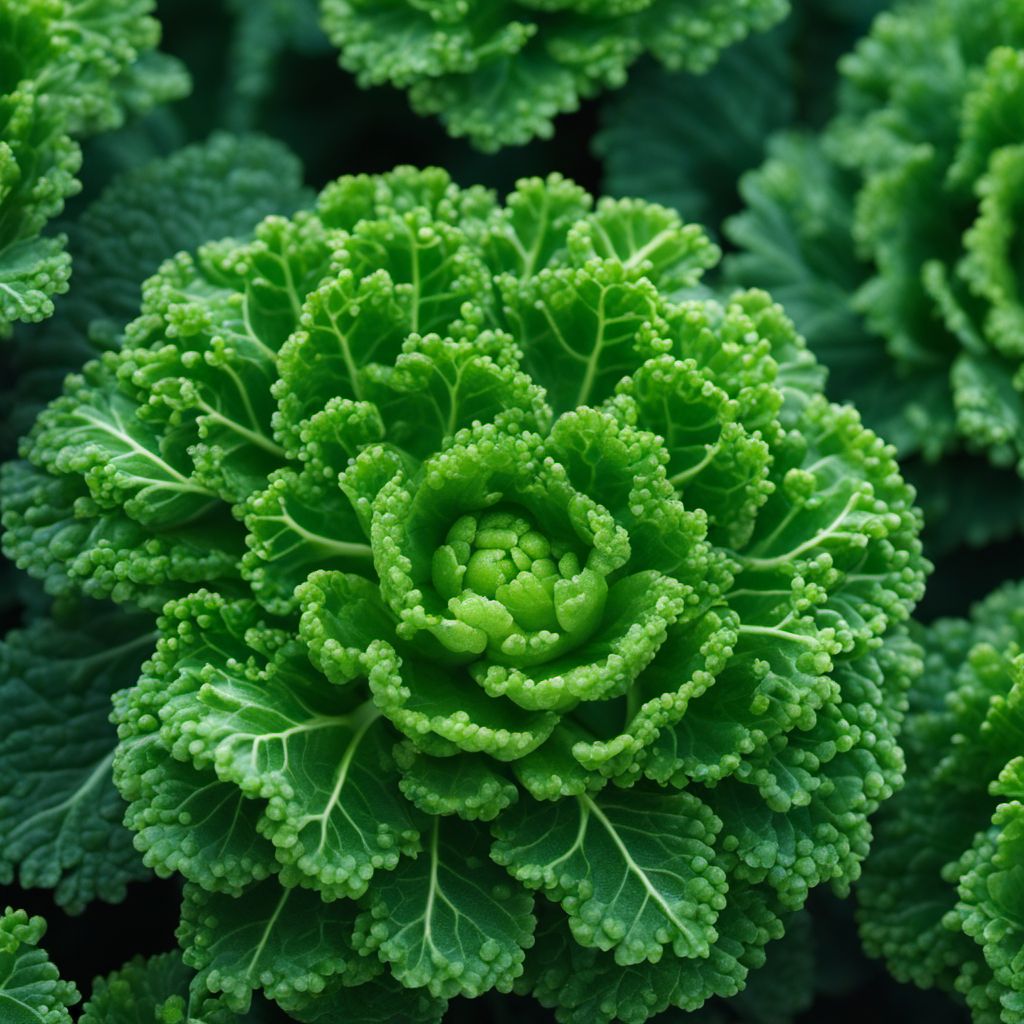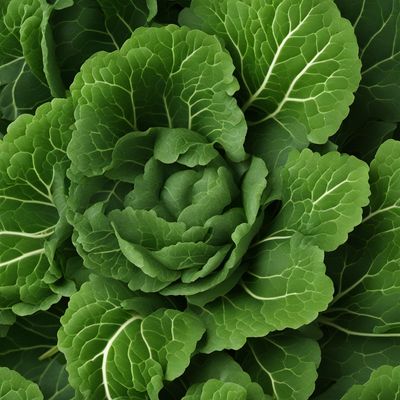
Ingredient
Rape kales
Vibrant and Versatile Rape Kales
Rape kales have dark green leaves with jagged edges and thin stalks. They have a slightly bitter taste, similar to broccoli, but with a nutty undertone. The leaves are tender and the stalks are crisp, providing a pleasant contrast in texture. These versatile greens can be sautéed, steamed, or roasted, and they pair well with garlic, lemon, and chili flakes.
Origins and history
Rape kales are believed to have originated in the Mediterranean region, specifically in Italy and China. They have been cultivated for centuries and are a popular ingredient in Italian, Chinese, and other Asian cuisines. In Italy, they are commonly used in pasta dishes, while in China, they are often stir-fried or used in soups. Today, rape kales can be found in various parts of the world, including North America and Europe.
Nutritional information
Rape kales are low in calories and rich in vitamins A, C, and K. They also contain important minerals such as calcium, iron, and potassium. Additionally, they are a good source of dietary fiber, which aids in digestion and promotes a healthy gut.
Allergens
Rape kales may cause allergic reactions in individuals who are sensitive to cruciferous vegetables, such as broccoli or cabbage. These reactions can range from mild digestive discomfort to more severe symptoms. It is advisable to consume rape kales in moderation and consult a healthcare professional if you have any concerns.
How to select
When selecting rape kales, look for bunches with vibrant green leaves and firm stalks. Avoid any that appear wilted, yellowed, or have slimy spots. Smaller leaves tend to be more tender and less bitter compared to larger ones. Opt for organic or locally grown varieties whenever possible to support sustainable farming practices.
Storage recommendations
To keep rape kales fresh, store them in a plastic bag or airtight container in the refrigerator. They can be kept for up to a week, but it is best to consume them as soon as possible for optimal taste and nutritional value. Avoid washing the leaves until ready to use, as excess moisture can cause them to wilt.
How to produce
Rape kales can be grown in home gardens or small-scale farms. They thrive in cool climates and can be sown directly in the ground or in containers. They require well-drained soil and regular watering. Harvest the leaves when they are young and tender for the best flavor and texture.
Preparation tips
Rape kales can be prepared in various ways. They can be sautéed with garlic and chili flakes for a simple and flavorful side dish. They can also be steamed and served with a drizzle of lemon juice and olive oil. Roasting rape kales with olive oil and Parmesan cheese creates a crispy and delicious snack. Additionally, they can be added to pasta dishes, soups, or stir-fries to enhance their nutritional value and add a unique flavor twist.
Substitutions
Broccoli rabe or Swiss chard can be used as substitutes for rape kales. These greens offer a similar bitter taste and can be prepared in similar ways. However, the flavor and texture may differ slightly from rape kales.
Culinary uses
Rape kales are commonly used in Italian cuisine, where they are added to pasta dishes, sautéed with garlic and chili flakes, or used as a topping for pizzas. They are also a popular ingredient in Chinese and other Asian cuisines, where they are stir-fried, used in soups, or added to dumplings. Rape kales can be found in countries such as Italy, China, the United States, and other parts of Europe and Asia.
Availability
Italy, China, United States, Europe, Asia
More ingredients from this category
Recipes using Rape kales

Rigatoni with Pajata Sauce
Hearty Rigatoni Delight: A Taste of Italian Comfort

Argentinian Grilled Molleja with Chimichurri Sauce
Succulent Grilled Molleja: A Flavorful Delight from Argentina

Basque-style Grilled Sweetbreads
Delicious Basque Grilled Sweetbreads: A Savory Delight from the Basque Country



